|
The
RMX160 Reverb comes included with Scope 5.0 and has the look of a classic rack mount reverb unit. Upon loading this unit for
the first time, I gave it my 'rhythm stick' test. Basically just a
stick click from one of my drum modules. I was pleasantly surprised at
the smoothness of the reverb tail when the Reverb Time parameter was set to
twelve, producing five seconds of seamless reverberation that was even
better than a couple of the hardware units I had owned.
This
was a unit I could set and forget in my mixes, and add a bit of brightness
to the mix with a boost from it's parametric equalizer on the output. I
found the red LED type display along the top of the unit very handy in
showing a summary of the most important parameter values.
|
|
|
 |
| |
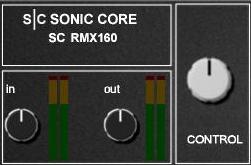 |
|
-
IN.
Controls the level of the signal going into the Reverb effect.
-
OUT.
Controls the level of the affected signal.
-
CONTROL.
This knob will change whichever parameter
value has been selected on the right (with the small red LED
light). In this example, it will change the value of
'Reverb Time'.
|
| |
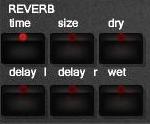 |
-
Time.
Controls the time of the
reverberation effect.
-
Size.
Controls the size of the reverberation room.
-
Delay L/R.
Adds a delay to the attack of the reverb signal.
-
Wet / Dry.
Controls the mix of Dry signal vs Wet signal.
|
| |
|
|
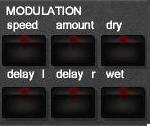 |
-
Speed. Modulation
speed.
-
Amount.
Amount of modulation applied to the reverb signal.
-
Delay L/R.
Adds a delay to the attack of the modulation effect.
-
Wet / Dry.
Controls the mix of the modulation effect vs the
un-modulated reverb affect.
|
| |
|
|
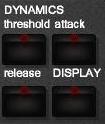 |
-
Threshold.
Level at which the dynamics effect is triggered
-
Attack.
Speed of the attack of the dynamics affect.
-
Release.
Release of the dynamics effect
-
DISPLAY. This
will show the envelope of the Dynamics section when
selected.
|
|
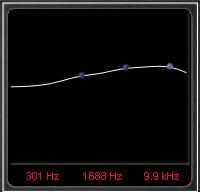 |
|
|
|
-
The parameter summary
display at the top of the RMX160 shows the three values
associated with the selected parameter. For example, if
you have selected Modulation Speed, the summary will also show
the Modulation Amount and Modulation Dry values.
|
|
 |
|
![]()